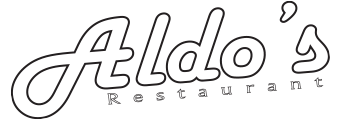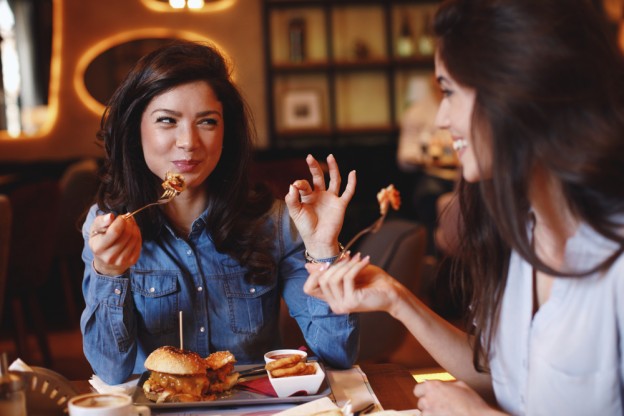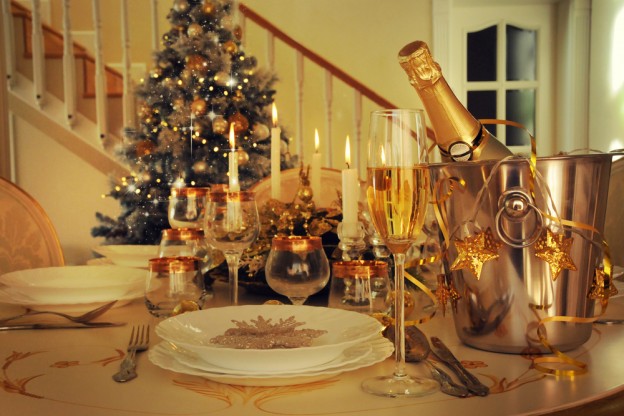While the global pandemic slowly settles down, restaurants and other businesses continue to take safety measures to ensure that their customers are safe. However, with places allowing people to go mask-less and with vaccination underway at an incredible speed, we have to ask ourselves if the same level of sanitization is still required.
Of course, hygiene is highly important in a restaurant, but can we go back to the pre-pandemic safety and sanitization measures? Or is it too soon? Restaurants in Ridgewood, New Jersey are finding the right balance. The team at Aldo’s is here with all the details.
Hygiene vs sanitization
Bear in mind that the two terms being compared are hygiene and sanitization, not hygiene and sanitation – both of which are important.
Hygiene refers to “behaviors that can improve cleanliness and lead to good health.” Sanitization, on the other hand, is the process of cleaning and decontaminating surfaces – largely to prevent the spread of the pandemic, in current times.
While the first is absolutely necessary at a restaurant, the second isn’t quite as important. It’s important that restaurant workers maintain good personal hygiene, and that the premises be perfectly hygienic, so germs and other harmful elements can’t contaminate the food. However, while certain sanitization practices like regularly sanitizing all equipment are necessary, wiping down grocery items and having a sanitizing tunnel may be overkill.
Some of the practices that our staff will continue include wearing gloves (when appropriate), washing their hands before and after handling food, cleaning surfaces daily, and staying home when they are sick. However, as mask requirements change and new research is found on the spread of the virus through contaminated surfaces, we may adapt our policies on mask use and the sanitization of surfaces such as receipt trays and condiment holders.
Aldo’s prides itself on being one of the best restaurants near Ridgewood, New Jersey, and this wouldn’t be possible if we didn’t follow proper protocol or had unsafe premises.
Hygiene standards in US restaurants
Hygiene standards have come a long way since the last couple centuries. Eat Right shares:
“In the early 1900s, food poisoning was at its height. Contaminated foods were causing typhoid fever, tuberculosis, botulism and scarlet fever. According to the Centers for Disease Control and Prevention, in 1900, the incidence of typhoid fever was approximately 100 per 100,000 population; by 1920, it had decreased to 33.8, and by 1950, to 1.7. The decrease was influenced by breakthroughs in the understanding of bacteria growth, hand washing, sanitation and the invention and implementation of pasteurization for milk products.
Another influencing factor in the downswing of food poisoning was the development of refrigeration in the 1920s. Before refrigeration was widely available, people would keep food cool by storing it on blocks of ice, burying it in the yard or storing it on an exterior window sill in the winter months.”
Now, we live in a completely different world – a world in which the FDA exists, and has immense power. Restaurants need to follow strict guidelines to make sure there is no risk of disease spread. The government has continued to move with the times, and to adopt modern technology and technological advancements.
So when you sit down for a meal at any number of restaurants in the Ridgewood, New Jersey area, you feel safe knowing every area of the facility has been inspected and cleaned, the staff maintain good personal hygiene, the kitchen equipment is regularly sanitized, the place has good ventilation, and that the restaurant uses modern technology to store and process food.
Hygiene theater
The Globe and Mail explains what sanitization theater is, and why we should ditch the practice:
“Across Canada, individuals and institutions are maintaining the same deep cleaning and product quarantining protocols that came to be expected at the start of the pandemic. But experts say that it’s time to move past “hygiene theatre” – or cleaning behaviours that give people a sense of security and protection, but are actually unlikely to reduce the likelihood of COVID-19 transmission.
And the environmental impact of disposable wipes, the cost of disinfecting supplies, and the burden on restaurant and retail employees to maintain strict COVID-19 cleaning measures, are further reasons to start being pragmatic – and stop wiping down groceries and mail.
“Part of the problem that we’re having, I think as infectious disease doctors and virologists, is [getting] people to understand that simply knowing that a virus is present in something on a surface, or in an aerosol, doesn’t mean that that’s an efficient way for the virus to get itself transmitted, because viruses undergo all kinds of changes that can affect its infectivity, its ability to bind to a receptor that is on a person that allows for infection,” said Dr. Gerald Evans, medical director of infection prevention and control at Kingston Health Sciences Centre and Queen’s University professor.
Dr. Evans added that one of the issues with disposable wipes is that they contribute to “the overall problems of trash.”
Dr. Peter Jüni, scientific director of Ontario COVID-19 Science Advisory Table, said that in public spaces and community settings outside of households, the risk of surface transmission is relatively low and can “easily be addressed through conventional cleaning – without deep cleaning, deep disinfection, and [by using] hand disinfectant.”
Aldo’s ensures your food is completely safe and healthy
So as we can see, there’s a line to be drawn between necessary sanitization, and sanitization theater. Restaurants in Ridgewood, New Jersey want to keep their customers and work staff safe, while also keeping costs within range and without contributing to environmental problems. At Aldo’s, we feel passionately about environmental issues, and we try and use eco-friendly solutions whenever possible.
We continuously educate ourselves on the best practices for maintaining safety and high standards at our restaurant, and walk the balance between what’s necessary and what isn’t as best as we can. This sometimes requires changes, but you can rest assured that the staff at Aldo’s stay on top of what’s going on and what we need to do to serve you best.
When you come to Aldo’s Restaurant for a meal, you can relax knowing it’s a safe environment – a place where you can just sit back and have a good meal without having to worry about viruses, or the world in general. It is our pleasure to provide delicious, healthy meals and a safe, inviting environment to our customers.
Italian food at Aldo’s Restaurant
Aldo’s is one of the best Italian restaurants in Ridgewood, New Jersey – so stop by sometime and try out our food! We will spoil you with mouth-watering food and heavenly wine, so you’ll never want to leave. If you want to pamper your taste buds, we’re the ones to go to! Here’s what we have to offer.
Dinner Menu
Come dine at Aldo’s! We’re open from 11:30 AM to 10 PM on Monday to Thursday, from 11:30 to 11 PM on Fridays and Saturdays, and from 1 PM to 9 PM on Sundays. We do not serve breakfast or brunch, but we have a wonderful selection available for lunch and dinner!
Antipasti – Fried zucchini, stuffed mushrooms (baked and stuffed with garlic, chopped roasted peppers, bread crumbs and cheese), mussels provincial, clams oreganato, stuffed eggplants, fried calamari, zuppa di clams
Soups – Stracciatella Romana, Tortellini in Brodo, Minestrone Casalinga, Pasta Fagioli, and Soup of the Day
Insalate – House salad, Mozzarella and tomato, Insalata di mare (seafood salad: calamari, scungilli, mussels and shrimp with lettuce, onions and peppers in garlic, lemon and olive oil), tomato and onion salad, hearts of palm
Homemade Pasta – Fusili Maestosa (tricolor spiral pasta in a pink sauce with mushrooms, onions and prosciutto), cheese ravioli, gnocchi, paglia & fieno (green & white), lobster ravioli
Pasta – Linguine, linguine siciliana, rigatoni Bolognese, rigatoni alla vodka (pink cream sauce with vodka, onions, peas and prosciutto), penne arrabiato, penne all norma
We have gluten free pasta available (spaghetti and penne)
You can find the complete lunch and dinner menus by visiting this link.
Wine menu (by the glass)
We have some incredible wines available by the glass and by the bottle. Here’s part of our selection – white wines available by the glass, from some of the finest vineyards in the world. Our bar is open till 1 AM.
LaLuca Prosecco (Veneto, Italy)
Astoria Sparkling Moscato (Piemonte, Italy)
Moet & Chandon Brut Imperial (Champagne, France)
Simi Chardonnay (Sonoma, California)
Les Charmes Chardonnay (Macon-Lugny, France)
MaManis Family Vineyards Chardonnay (California)
Barone Fini Pinot Grigio (Valdadige)
Zenato Pinot Grigio (Italy)
Fouassier Sancerre Estate (Loire Valley, France)
Babich Sauvignon Blanc (Marlborough, New Zealand)
Beringer White Zinfandel (Blush) (California)
Saint M Riesling (Pfalz, Germany)
Jean-Luc Colombo Cape Bleue Rose (France)
For a complete pane and vino menu, visit this link.
You’re welcome to peruse the menu at home at your leisure, so you have plenty of time to decide what you want to have. However, if you aren’t sure, our staff would be glad to help!





